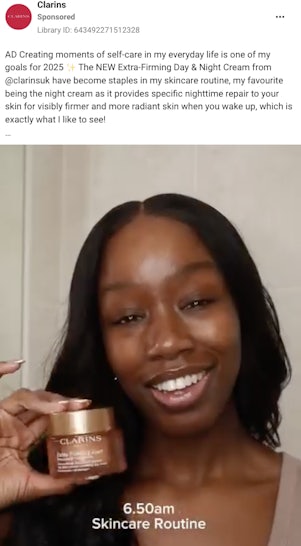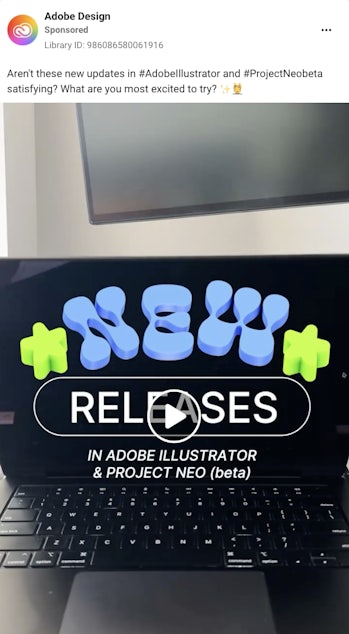User-generated content (UGC), which includes images, videos, blog posts, reviews, and other content created and shared by users outside of traditional professional marketing, has quickly become a crucial tool for brands aiming to establish genuine connections with their audiences. Interestingly, 93% of marketers leveraging user-generated content in their marketing efforts claim that it performs notably better than traditional branded content.
By 2026, up to 90% of online content could be AI-generated, and user-generated content will be increasingly blended with AI-assisted creation. To stand out in the sea of synthetic content, authenticity and human-driven elements will be more crucial than ever.
At Impression, we can help with TikTok advertising and Meta ads. Get in touch to see how we can grow your reach and engagement with paid social.
- UGC in 2024 roundup: A summary of trends and insights
- LO-FI UGC: Real, Raw and Relatable
- Employee-Generated Content (EGC): Empowering Brand Ambassadors
- AI-Generated Content (AIGC): The Future of UGC
- UGC for B2B and Service-Based Brands: A new approach to connecting with customers
- The Future of UGC in 2025: Innovation and Adaptation
- How to integrate across your social strategy?
UGC in 2024 roundup: A summary of trends and insights
In 2024, UGC’s rapid growth cemented its status as a core marketing strategy, with 93% of marketers reporting that it outperforms traditional branded content, driving tangible benefits through authentic consumer-driven engagement. A leading trend was the rise of short-form videos under 30 seconds—often as short as 15 seconds, especially for vertical placements on platforms like TikTok, Instagram, and YouTube Shorts.
From the work we’ve done with our clients, we know that integrating UGC into paid social campaigns continues to prove to be cost-effective, countering perceptions of advertisements needing to be polished to perform well. Research shows that 79% of consumers feel more comfortable with brands that showcase user-generated content, viewing it as more trustworthy. Brands saw clear advantages in driving awareness, nurturing brand loyalty, and improving the overall customer experience.
An example of this is Iconic London’s use of UGC. Iconic London’s digital strategy within 12 months has been centred around building trust with consumers through authenticity, continuity, and connections on the website and Instagram. The makeup brand has effectively leveraged UGC to enable shoppers to see its products in action through tutorials, tips and tricks, and makeup reviews. Iconic London’s use of UGC has paid off within 12 months across its website and Instagram, as the brand saw a 126% lift in conversion rates and an 11% lift in average order value. This emphasised the importance of using authentic content to capture awareness and improve the overall user experience.
LO-FI UGC: Real, Raw and Relatable
A trend that has continued to rise is Lo-Fi (Low Fidelity) content, which prioritises authenticity and a natural feel. As consumers seek genuine connections with brands, they are moving away from overly polished content and embracing raw, spontaneous, and personal videos and images. Lo-Fi UGC can include anything from unedited smartphone videos to behind-the-scenes photos that show a brand’s unfiltered side. This strategy emphasises relatability, demonstrating that brands are not flawless and embrace reality.
Brands are continuing to embrace this more “imperfect” approach as a way to resonate with younger, more sceptical audiences. It enables them to show a more relatable, human side – whether it’s showing a product in action or capturing moments of failure. This creates a deeper emotional connection, fostering trust and loyalty.
- Consumers demonstrate a 63% increased likelihood of making purchases or installing an application after viewing user-generated content.
- 90% of young adults (age 18-36) respond favourably to content creators who display their imperfections.
By utilising Lo-Fi creator content in its ads on TikTok and Instagram, Clarins showcases the authentic benefits of its products in action. The ads feature relatable, everyday scenarios, fostering a sense of connection with the audience through imperfection and relatability.
Lo-Fi UGC offers a significant advantage by humanising brands and fostering a closer connection with target audiences. This approach, which embraces imperfection, allows brands to experiment with more authentic content while reducing production costs and increasing engagement. The challenge in 2025 will be striking a balance between authenticity and professionalism while effectively managing potential risks to brand reputation.
Employee-Generated Content (EGC): Empowering Brand Ambassadors
Employee-generated content (EGC) is becoming a powerful tool for brands seeking to enhance their credibility and build trust with audiences. In 2025, employees – particularly those in social teams – are increasingly becoming the faces of brands on platforms like TikTok, Instagram Reels, and LinkedIn. They’re sharing personal stories, behind-the-scenes content or product insights, and employees humanising brands in ways that traditional advertising cannot.
Employee-generated content (EGC) is particularly effective on social media platforms, where consumers value transparency and authenticity. Brands like HubSpot and Adobe have successfully leveraged EGC by turning their employees into brand advocates. For example, Adobe’s use of EGC on platforms like TikTok humanises their brand by showcasing employee creativity and everyday office life. This resonates with younger consumers, like Gen Z, who trust content from real people more than from companies.
Similarly, Boots UK has embraced EGC on TikTok. By sharing behind-the-scenes videos, employees have become influencers, showcasing products and their daily lives. This approach generates fresh, relatable content that humanises the brand and offers a more personal experience, ultimately connecting with viewers.

In 2025, EGC is likely to be seen more frequently online as companies recognise its potential to foster trust, enhance company culture, and elevate employee morale. Employees are seen as more relatable and credible, and their posts resonate more with their networks. This leads to a multiplier effect, increasing brand awareness, website traffic, and conversions. Studies show employee posts are reshared up to 24 times more frequently than brand posts, highlighting the potential of employee advocacy in amplifying a brand’s message.
As employees assume a more prominent role in brand storytelling, companies must provide guidelines and incentives to ensure employee-generated content aligns with brand values.
AI-Generated Content (AIGC): The Future of UGC
Artificial intelligence (AI) has started making waves in content creation, especially through platforms like TikTok Symphony Studio and other AI-based designs for creating avatars, videos and personalised UGC. TikTok Symphony Studio is a simple video editing tool that allows users to easily add music, effects, and voiceovers to their videos. Its user-friendly features make it ideal for creating high-quality content quickly and easily, even for those without advanced editing skills. In 2025, AI-generated content (AIGC) will be crucial for scaling UGC productions, allowing brands to create personalised content without large teams. Platforms like TikTok and Sympathy Studio enable engaging music videos, and tools like AI to generate text-based content in real-time, from product descriptions to blog posts.
A major advantage of AIGC is its scalability, enabling rapid content testing and iteration. Brands like Coca-Cola are already experimenting with AI-generated video ads tailored to individual preferences. This personalisation increases engagement and reduces manual content production costs. Source – AI-Powered UGC
However, over-reliance on AIGC could alienate audiences who value authentic human interaction. Successful AIGC balances creativity with human storytelling. Used thoughtfully, AIGC can scale content effectively – but, it should not replace genuine human connection.
UGC for B2B and Service-Based Brands: A new approach to connecting with customers
UGC) is no longer just for B2C brands. B2B and service-based brands are increasingly using UGC to engage with their audiences in meaningful ways. This includes showcasing how users interact with their products or services, whether it’s accounting software, DIY tools, or garden equipment. UGC allows B2B brands to demonstrate how their offerings solve real-life challenges.
For example, a DIY tools brand could encourage users to share videos of its home improvement projects that incorporate the company’s tools. This type of UGC is more relatable and helps to address customer pain points, creating stronger connections with the audience. This trend has been shown to drive brand loyalty and engagement. In 2025, Xero, a UK-based accounting software company, leveraged UGC to engage with its audience and showcase the value of its services. By encouraging users to share their experiences and Customer Stories on social media, Xero demonstrates how its platform can streamline accounting processes, manage finances, and improve business efficiency. This UGC strategy not only builds trust and brand loyalty but also provides valuable insights into the real-world applications and benefits of Xero’s software, helping the company strengthen its position in the competitive B2B market.

The Future of UGC in 2025: Innovation and Adaptation
UGC is set to become increasingly important as we progress through 2025. Brands must strike a balance between creativity and authenticity while adapting and experimenting with new tools to meet the demands of this evolving landscape. Successful UGC utilisation involves creating a seamless, cross-channel experience and aligning content with business goals. By focusing on personalised and relevant content that evokes emotion, brands can cultivate deeper connections and achieve greater success.
The key takeaway for marketers is to adopt a test-and-learn approach, experimenting with new content formats and using data-driven insights to optimise UGC campaigns. Whether through innovative brand storytelling or leveraging technology to scale content production, UGC will remain a vital component of any successful marketing strategy.
How to integrate across your social strategy?
To get the most out of UGC and paid ads, liaising with internal organic teams or partner agencies can unlock some key learnings for both parties. Many of our clients share data and insights from paid to organic social teams and agencies to strengthen their UGC offering across both paid and organic social. Content may need tweaking to align with best practices across social platforms. For example, we’d always suggest frontweighting the video to make use of the first 10 seconds to highlight key points. When scrolling through social, new users of a brand need to know what a product/brand is, and how this will benefit them quickly. This means that even if a user doesn’t continue to watch the remainder of the video, they will still be able to understand the key point raised here, increasing brand awareness and recognition further down the funnel.
There is also an opportunity to take learnings from what’s getting strong organic engagement. Videos that resonate well with your existing community are a great way to know where to start with using UGC in paid ads.








